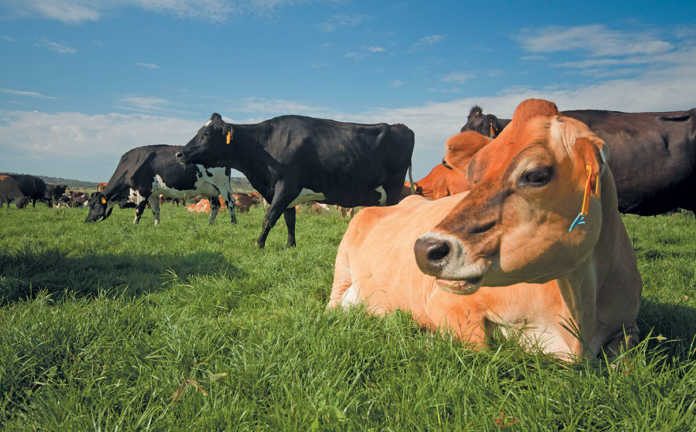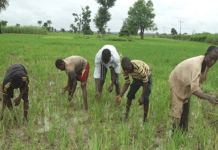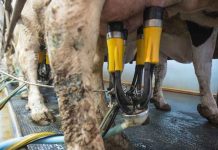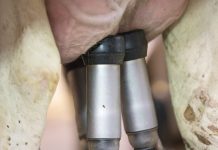Free State dairy farmer Mick Quin has managed to grow his business by more than 800% at a time when many inland producers are struggling to survive. His secret, as Sabrina Dean discovered, is active and precise pasture management.
When his farm dam broke on Wednesday, 8 June 2011, fourth-generation dairy producer Mick Quin was convinced he saw the future of his business vanishing as rapidly as the water.
At that stage he was milking about 200 cows a day on the 1 146ha farm Bishops Glen on the outskirts of Bloemfontein.
The disaster had been caused by heavy rain and resulted in a huge flood of water bursting the wall of the dam along the Renosterspruit.
Mick was faced with a crisis, as fixing the dam was unaffordable at existing production levels.
“I was financially in trouble, so I had to make a plan,” he recalls.
Instead of throwing in the towel, Mick sought and found investors in the Eastern Cape who provided not only financial backing, but the know-how to implement a seasonal, pasture-based dairy.
“It’s the best thing I ever did,” he says simply.
Today, six years later, Mick is milking 1 650 cows a day at peak production periods.
A new approach
Mick partnered with three shareholders, two of whom provided capital. The third,
the Collett dairy farming family comprising father Hilton and sons Hilton and Llewellyn, provided both capital and expertise.
They played a pivotal role in restructuring the dairy operation and have helped to manage the Bishops Glen Trading Trust.
“It’s nice to have them on-board because they come up every six weeks to two months and assist me,” says Mick.
The partnership was set up for a 10-year period, with Mick retaining an option to buy back 10% of the shares after seven years, and buy out the other shareholders after 10 years.
All partners receive a monthly return on their investment, and the farm itself remains Mick’s property.
The new dairy business, which officially got underway in January 2012, required a complete re-evaluation of its existing systems.
Farming grass
Mick is not the first farmer to say, “we farm grass”, but this slogan is truly at the heart of his operation.
The “dairy platform”, as he calls it, comprises 27 irrigation pivots across 240ha. Additional pastures can be incorporated to increase the total grazing area to about 400ha, which is needed during the winter months.
Pastures are planted to perennial rye grass and clover, and managed according to a strict rotation. This is not simply a schedule stuck on the wall; the grass is measured daily with a device known as a New Zealand plate measure.
Mick explains that rye grass is a three-bladed grass; as the fourth blade begins to emerge the first starts to die. The best time to graze the grass is therefore at the two-and-a-half to three-leaf stage, and this requires active management.
Each pivot is divided into segments to create camps. Cows are then grazed in order of performance, starting with the most productive.
Less productive animals come next, followed by dry cows and heifers. Each rotation (all three groups) lasts a maximum of 72 hours, and then that section of pasture is rested to prevent the grass from going dormant.
“When grass goes dormant, it takes longer to recover. So the cows must be off in 72 hours and we then fertilise and irrigate it,” he says.
The length of a full rotation of the dairy platform varies according to the time of year and the grass growth rate; it can be as short as 21 days in spring, and as long as 90 days in winter.
Each cow requires 20kg of dry matter a day. About 15kg is grazed off pasture, with the remainder in the form of a meal ration provided at milking. This is a milled, maize-based mixture that contains the correct balance of vitamins and minerals.
Mick and his team cut grass to supplement the pasture if the volume is insufficient. They also cut excess grass to prevent wasting the resource.
In winter months (May to August), it is sometimes necessary to supplement with tef, eragrostis or lucerne.
Pastures are inspected annually in March; if the grass is insufficient in any camp, an overseed planter is used to sow seed into existing pasture. This ensures good density and prevents dead areas the following season.
The team carries out weed control mechanically, using a tractor to cut weeds after grazing, as well as by hand. Casual workers are employed to chop out thistles.
“I could possibly do it chemically, but I like to give people work,” says Mick.
Rethinking the herd
Mick is one of a small number of dairy farmers in the Free State to follow the coastal dairy production template: pasture-based feeding and seasonal calving. He says that 70% of the herd calves in spring, with the remaining 30% in autumn.
The peak production period is September, October and November, when there is abundant grass.
“We milk as many cows as possible at that time because that’s when we’re producing milk cheaply,” he says.
He has also moved away from a pure Holstein-type cow, preferring a Holstein-Jersey crossbreed.
“The bigger Holstein animal is not sustainable anymore, especially if it has to walk to the pastures.”
While Holsteins generally produce more milk, Jerseys tend to produce milk with a higher milk-solids content. The crossbreed is intended to provide the best of both.
Breeding
Mick sources semen from CRV Xseed and World Wide Sires. The Bishops Glen team starts inseminating at the beginning of October and finishes the task by late December, before the heat becomes excessive.
High temperatures have a negative effect on conception rates.
The cows are tested to see if they conceived, and those that have not conceived are put in with bulls bought in annually for this purpose.
Heifers are inseminated for the first time at 15 months.
Mick’s aim is to achieve a 80% conception rate throughout the herd, although this is not always possible. He adds that getting the cows to calve at the right time requires good management.
Mick employs approximately 25 permanent staff in the dairy and praises their dedication.
His outdoor manager, John-Henry Mitchell, is responsible for pasture maintenance and care, while Doubt Shava, a qualified animal scientist from Zimbabwe, is his general manager of operations, looking after the day-to-day operation of the dairy and everything to do with the animals.
“His management of the staff is unbelievable; they all know exactly what to do,” says Mick.
Doubt’s day starts before dawn, seven days a week.
“I come in at 4:30am to make sure the machines are working, the milk temperature is correct, and the staff have reported for work. Then we start with the milking,” he says.
He thinks that by spring this year they will be milking 1 700 cows twice daily.
At the time of the interview, a large number of cows had been dried up and the team were milking only about 1 100 animals per day.
This equates to about 21 000ℓ/day, with the larger portion delivered in the morning milking session. All milk is sold to Clover and collected daily.
Doubt also administers medical treatment, conducts inseminations, checks on dry cows, and manages heifers.
Flies and ticks are controlled with a fly mop that hangs at the entrance to the turntable. A strict vaccination protocol is followed for diseases, including blackleg, lumpy skin disease, Rift Valley fever, brucellosis and tuberculosis.
Improved technology
Mick has personally financed additional high-tech infrastructure upgrades, including the installation of a 2018milking shed worth R6,2 million.
It is equipped with a 66-point Waikato turntable, as well as an 18 000ℓ milk tank, a 40 000ℓ milk silo, feed silos, and sophisticated animal handling equipment.
The rotary system is the “best and easiest form of milking”, according to Mick. It is easier to manage, and lessens stress for the cows. He adds that the system is currently near capacity at peak milking periods and any further expansion would involve installing another turntable.
An integrated, computerised management system, run on software provided by Africhem, is used. This enables Bishops Glen to keep track of each cow’s calving and insemination dates, bull name, and days in milk.
Phone Mick Quin on 082 451 5840 or email him at bishopsglen@mweb.co.za.





